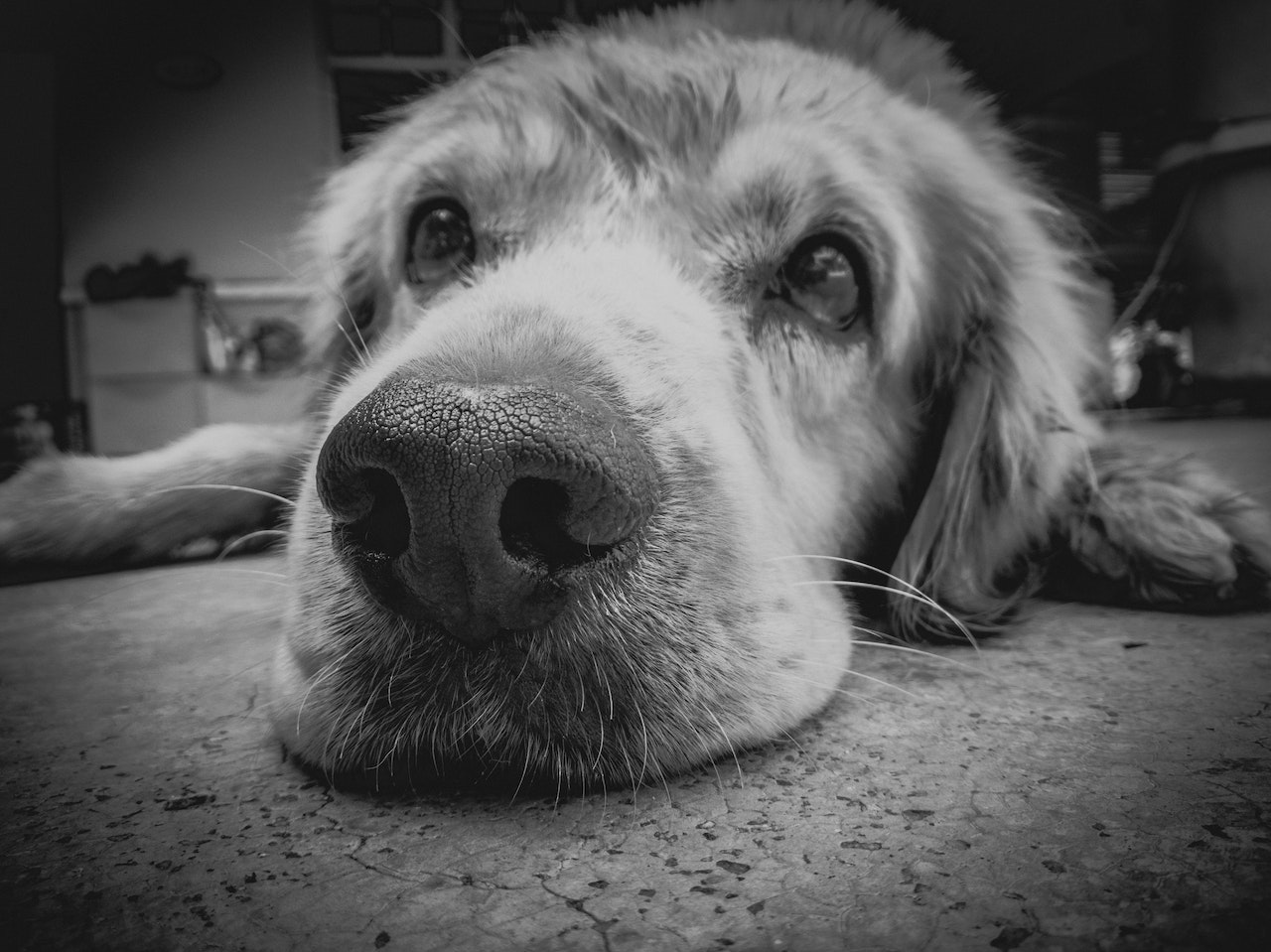Similar to Alzheimer’s disease in humans, cognitive decline, also known as canine cognitive dysfunction (CCD), is a disorder many aging canines experience. A variety of symptoms, including confusion, memory loss, and disorientation, may be brought on by it. CCD can cause behavioral changes in dogs, including elevated anxiety, impatience, and restlessness. Moreover, they could have altered sleeping habits, lose their housetraining, and become less attentive to directions or signals.
As dogs mature, their brains change, which leads to CCD. Cognitive decline can result from the brain cells in older canines losing their ability to send messages effectively. Dogs with CCD can still lead fulfilling lives and give their owners companionship with the proper care and supervision. The following six signs should be looked for if you suspect your dog has CCD:
Frequent accidents in the house
A prominent symptom of canine cognitive dysfunction (CCD) in older dogs is having lots of accidents in the house. Like Alzheimer’s disease in humans, CCD is an illness that impairs canine brain function. Dogs’ brain cells may become less effective in transmitting impulses as they get older, which could cause cognitive loss. A decrease in synthesizing neurotransmitters, vital for proper brain function, is also possible. The accumulation of specific proteins in the brain may also contribute to the onset of CCD. A dog may forget their housetraining due to all of these changes and have accidents indoors.
It’s crucial to remember that having a lot of accidents at home might also indicate other health problems, such as urinary tract infections or digestive issues. To rule out any underlying medical conditions, taking your dog to the doctor is critical.
Changes in behavior
Increased anxiety, impatience, and restlessness in dogs with CCD may express excessive whining, barking, or pacing. They could also start to cling to their owners more and demand more care. Dogs with CCD may also become less receptive to signals or orders, which can be upsetting for owners who depend on their pets to obey commands.
A further typical behavioral alteration in dogs with CCD is trouble identifying well-known humans or animals. This may result from social detachment and a lack of interest in social interaction. Dogs with CCD may also struggle to adapt to changes in their habits or surroundings, making them more scared or aggressive.
Training difficulties
Canine cognitive dysfunction (CCD), which can cause behavioral changes and memory loss and make it harder for dogs to learn and recall commands, can be a symptom of training issues in aged canines. Dogs with CCD may become more easily confused or disoriented as the condition worsens, making it harder for them to concentrate during training sessions. Their capacity to obey their owner’s directions may also vary, which can be upsetting for the dog and its owner.
Dog is being forgetful
You may realize that your dog is forgetful if they lose track of where they are or become confused, even in familiar settings. They could also lose track of familiar instructions or forget their housetraining, leading to mishaps indoors. Also, they could appear more easily confused and struggle to solve problems or pick up new information.
To aid your dog in getting distracted easily, you may do several actions at home. Confusion and tension can be lessened by maintaining a regular schedule and avoiding significant changes to their surroundings. Moreover, rewarding good behavior with praise or food helps your dog remember previous orders. To keep their brain active and healthy, you may also provide them with cerebral stimulation with puzzle toys or obedience training to keep their brain active and healthy.
Dog has anxiety
When their ability to comprehend and adapt to their environment decreases, dogs with CCD may become more anxious. They might become more easily confused or disoriented, which could make them fearful or anxious. CCD may also alter behavior, such as making a person more irritable or restless and heightening anxiety. Due to their anxiety, dogs with CCD may exhibit excessive barking, destructive behavior, or fear of unfamiliar persons or circumstances.
Doesn’t want to play or go for walks
It may be a sign of falling energy levels or a decrease in interest in things they formerly loved when dogs with cognitive impairment or CCD lose interest in playing or going for walks. They could look tired or uninterested and show less response when encouraged to play or exercise. It is crucial to seek veterinary care if you see these changes in order to determine the underlying problem and obtain the proper therapy.
To keep their pets’ minds busy and healthy, pet owners may provide them with mental stimulation at home, such as puzzle toys and obedience training. Treats or praise used as positive reinforcement can pique a dog’s interest in previously boring activities. Dogs may be more willing to participate in play or exercise if it is divided up into shorter sessions throughout the day to avoid boredom and boost interest.
There are a few things you can do to assist your dog manage with their symptoms and maintain their quality of life if you suspect that they are suffering from canine cognitive dysfunction, commonly known as cognitive decline in dogs. Here are a few advices:
- Make regular appointments with your veterinarian: Your veterinarian can suggest suitable treatments and assist you in identifying any underlying medical conditions that may be causing your dog’s cognitive impairment.
- Making sure that your dog’s habitat is as secure and pleasant as you can is vital because as they age, dogs may become less conscious of their surroundings. To restrict access to areas where your dog could be wounded, think about using non-slip mats, keeping the floors clean of litter, and utilizing baby gates or barriers.
- Both physical and mental exercise may keep your dog’s mind busy and interested. Think about engaging in low-impact workouts your dog enjoys, playing games like hide-and-seek, and using puzzle toys.
- Maintaining a schedule can make dogs feel safer and less worried as they age since they can quickly become disoriented.
- Your dog’s present behaviors can be strengthened and new ones can be learned through positive reinforcement training. Also, it may boost their self-esteem and lessen their worry.
- To control your dog’s cognitive impairment, your vet may suggest medication. Certain drugs can help alleviate anxiety and enhance cognitive performance.
- Dogs who are experiencing cognitive decline may exhibit increased agitation, anxiety, or confusion. It’s crucial to be understanding and patient with them while they adjust to these changes.
In general, giving a dog experiencing cognitive decline a safe and interesting environment, a regular schedule, and a lot of love and care is the key to helping them. By implementing these suggestions, working closely with your veterinarian, and preserving your dog’s quality of life, you may help them live their golden years to the fullest.





